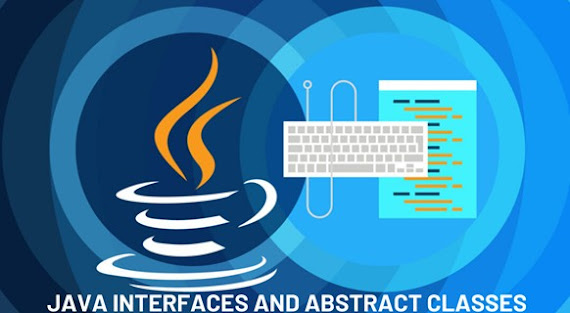Abstract classes and Interfaces in Java
Introduction:
In Java, abstract classes and interfaces are used to create a blueprint for classes. They provide a way to define common properties and methods that can be inherited by multiple classes. Abstract classes and interfaces are both used to achieve abstraction, which is one of the primary concepts of object-oriented programming.
Abstract Classes:
An abstract class is a class that cannot be instantiated. It can have abstract methods, which do not have an implementation, and concrete methods, which have an implementation. Abstract classes can be extended by other classes, which must provide an implementation for all the abstract methods.
abstract class Animal {
public abstract void makeSound();
public void eat() {
System.out.println("The animal is eating.");
}
}
class Cat extends Animal {
public void makeSound() {
System.out.println("Meow!");
}
}
class Dog extends Animal {
public void makeSound() {
System.out.println("Woof!");
}
}In the example above, we have an abstract class called "Animal" that has an abstract method called "makeSound()" and a concrete method called "eat()". We then create two classes, "Cat" and "Dog", which extend the "Animal" class and provide an implementation for the "makeSound()" method.
Interfaces:
An interface is similar to an abstract class, but all methods declared in an interface are abstract and do not have an implementation. Interfaces can be implemented by classes, which must provide an implementation for all the methods declared in the interface.
interface Animal {
void makeSound();
void eat();
}
class Cat implements Animal {
public void makeSound() {
System.out.println("Meow!");
}
public void eat() {
System.out.println("The cat is eating.");
}
}
class Dog implements Animal {
public void makeSound() {
System.out.println("Woof!");
}
public void eat() {
System.out.println("The dog is eating.");
}
}In the example above, we have an interface called "Animal" that has two methods, "makeSound()" and "eat()". We then create two classes, "Cat" and "Dog", which implement the "Animal" interface and provide an implementation for both methods.
Abstract Classes vs. Interfaces:
Abstract classes and interfaces are both used to achieve abstraction and provide a way to define common properties and methods. However, there are some key differences between the two:
Abstract classes can have concrete methods, while interfaces cannot.
A class can only extend one abstract class, while it can implement multiple interfaces.
Abstract classes can have instance variables, while interfaces cannot.
Abstract classes can be used to provide a default implementation for methods, while interfaces cannot.
Conclusion:
Abstract classes and interfaces are essential concepts in Java programming that allow developers to create reusable code and promote code flexibility and maintainability. While they are similar, abstract classes and interfaces have some key differences, and the choice between them will depend on the specific requirements of a given application.
By using abstract classes and interfaces effectively, developers can create software that is more flexible, extensible, and adaptable to changing requirements. However, it is essential to use these concepts judiciously and avoid creating overly complex code that is difficult to understand and maintain.





Share Your Feedback Here !!